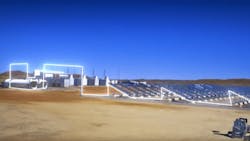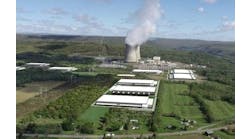Electricity was a phenomenon known for centuries, even millennia, before Michael Faraday, Georg Ohm, Alessando Volta and, eventually, Thomas Edison, Nikola Tesla and George Westinghouse truly harnessed and scaled it up into the pivotal energy technology it is today.
Science moves slowly at first, from crawl to walk to sprint to supersonic speed. In the computing world, skeptics repeatedly have predicted the end of Moore’s Law—doubling transistors on a circuit about every two years—and yet the trend persists onward.
Artificial intelligence is essentially an infant in the world of industrial technologies compared to internal combustion, power plants and manufacturing innovation. Yet it grows and moves forward at an ever exponentially increasing pace in nearly all facets of life. The child is devouring information and growing into a mammoth manmade tool for revolutionizing energy efficiency, deployment of decentralized resources and, perhaps, the best business case yet for microgrids to preserve resiliency and attain sustainability. Will it outgrow us?
Sunday evening, prior to watching the 49ers decimate the Dallas Cowboys with near computer-like precision, I watched a “60 Minutes” segment with Geoffrey Hinton, the British computer scientist and so-called “Godfather of AI” who departed Google earlier this year because of his fears of what artificial intelligence (AI) could mean for modern society. He expressed those concerns on the show but also said he saw great benefits to artificial intelligence in health care and other arenas.
The energy industry is certainly tapping into the energy efficiency, balancing and smart-grid calculations made possible by AI. Lisa Cohn writes about an AI-infused smart grid project at Florida International University. Last week, I posted insights from microgrid experts at PXiSE Energy Solutions, PowerSecure and GridBeyond.
If there’s an area where AI can help make grid resiliency and financial benefit connect, it’s in microgrids and the decentralized distributed energy sector, according to those experts. AI can aid in making real-time and balancing decisions to secure electricity for mission-critical facilities as well as assist in grid forming — that’s very real and not artificial at all.
Time will tell how AI plays in the microgrid-DER-virtual power plant equation. The contribution is likely to be quite substantial, and safeguards will be required for bulwarks. AI is here to stay so let’s see how we can best use it for the greater good.
Other MGK Editor Take Columns:
Energy Transition Matters Most to our Next Generation








